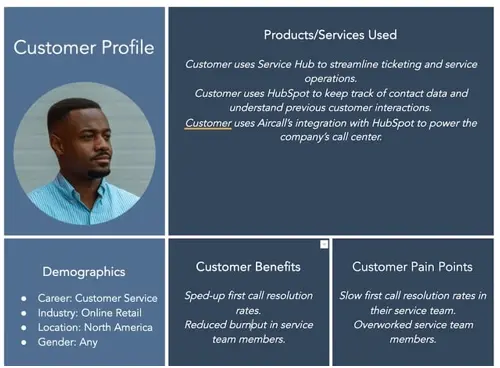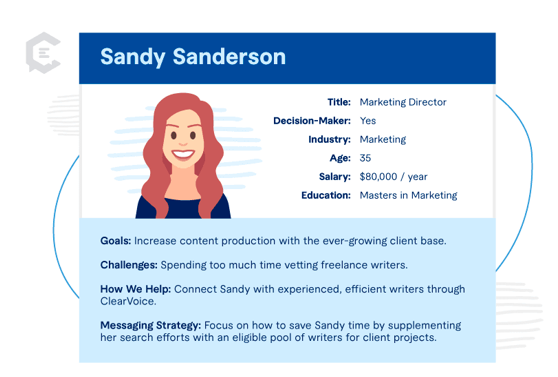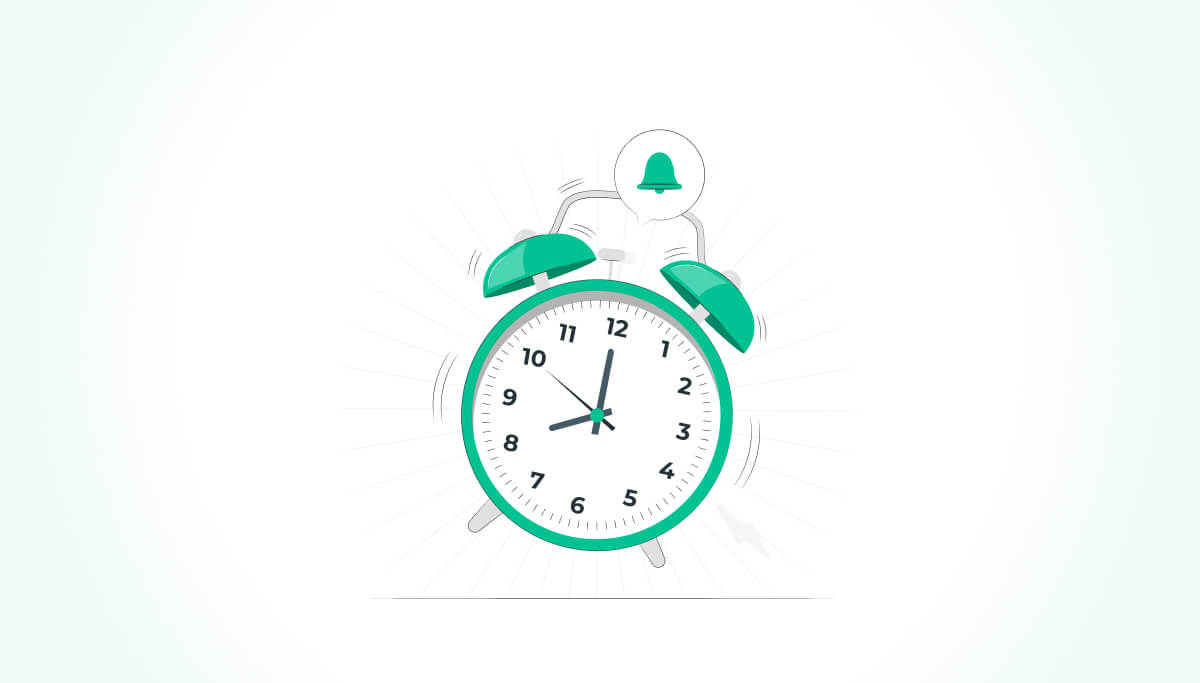Who are you selling to? What challenges are they facing? How can you create an amazing customer experience with customer profiling?
Every customer success manager knows these questions are important, but finding the right answers can be challenging. Knowing your customers can be tricky, especially since people have diverse behaviors and ever-changing preferences. But, when done right, customer profiling can be very powerful for your business.
This article will discuss everything about customer profiling, including the types, how to create one, best practices, and examples.
What is a Customer Profile?
A customer profile defines the ideal customer based on a set of unique characteristics such as demographics, interests, behavior, and preferences. It helps you understand who your target audience is and how to communicate with them effectively.
A well-documented customer profile is a valuable tool for businesses to create targeted marketing strategies, personalize communication, and make smarter product improvements.
Why is customer profiling important?
Developing a product without understanding your customers is like shooting in the dark and hoping you hit a target. While you might eventually hit one, you’ll have wasted money, time, and resources by doing so.
Customer profiling helps you understand who you’re selling to. It also helps to:
Have a better understanding of the customer:
Customer profiling helps you know more about what your customers want, so you can create a product that meets their needs.
Reduce churn and increase customer retention:
Customers are always looking for products that provide value and meet their needs. By understanding your customers.
Increase Customer Loyalty:
Customers are loyal to brands that effectively reach out to engage them and build relationships with them. By knowing your customers inside out, you can tailor your value proposition, messaging, and channels to resonate with them.
Improve Efficiency:
Profiling helps businesses allocate resources effectively to the right customer segment and develop strategies that resonate with them.
Use your marketing resources more efficiently:
Understanding your customers helps you avoid wasting resources marketing to the wrong people. With customer profiling, you can focus on creating marketing campaigns that match your customer’s expectations.
What is the difference between customer profiling and segmentation?
The difference between customer profiling and segmentation comes from their approaches to understanding and categorizing customers. Customer profiling focuses on understanding individual characteristics, whereas segmentation focuses on the shared characteristics among groups.
Both data types have their pros and cons.
Customer profiling provides comprehensive data on the individual customer, including their preferences, behaviors, and needs, which makes room for personalization. It can help businesses to:
- Tailor customized product offerings to meet the needs of different customers
- Create a personalized experience, which makes it easier to build long-term relationships
- Avoid the risk of generalization that comes with segmentation, which may oversimplify the diversity and individual variations within a segment.
As for segmentation, it’s great for:
- Managing resources so businesses can focus on highly-valued segments rather than individual customers.
- Identifying untapped segments to recognize opportunities for market expansion
- Scaling to a larger customer base
What is the difference between customer profiling and buyer personas?
Now, let’s discuss the difference between customer profiling and buyer personas.
Your customer profile is based on a detailed description of existing customers with an active subscription to your product or service. It is data-driven and collects information on their behavior, preferences, and demographics to create a holistic view of the customers.
On the other hand, your buyer personas are fictional representations of the ideal customer based on market research, customer insight, and behavior data. It often times comes at the first stage of market research and uses
Types of Customer Profile Data
There are five main types of data that help businesses create a comprehensive profile of their customers, including:
Demographic information
This profile collects customer data on the characteristics of a specific population or customer segment. Demographic profiling defines who your customers are based on factors like age, gender, marital status, race, employment, and income level. You can collect this data through online surveys, polls, and focus groups.
Demographic data helps businesses answer questions like:
- The age group of users interested in their product
- Which group of users has a higher retention rate and provides the most revenue?
- What channels should businesses leverage to deliver a better experience and increase sales?
Psychographic Traits
This data analyzes psychological and cognitive insights into the customer’s values, thoughts, lifestyle, interests, personality traits, and other psychological makeup. It can be used to understand the audience’s preferences, priority initiatives, and barriers that might prevent a customer from purchasing.
You can gather this data through surveys, customer interviews, market research, and focus groups. This data makes it easier for marketing teams to optimize a website to deliver what customers want, refine their messaging, and update product roadmaps.
Behavioral patterns
Behavioral data analyzes a customer’s interactions with your brand. This data collects product usage data, such as how often they log in, the features they use, types of feedback, and the customer journey path they take.
Behavioral patterns can help businesses segment their customers to identify loyal customers, identify cross-selling and upselling opportunities, create personalized recommendations, and prevent churn from happening.
Geographic location
Geogrpahic profiling collects data on the customer’s country, region, city, and neighborhood. This information can assist businesses in understanding the needs of the people living in the location so you can tailor their experience accordingly.
Transactional data
Transactional data tells you everything about the customer’s transaction history with your brand. This records the subscription plan purchased, the cross-selling and upselling offers they paid for, the payment method, and the date and time of purchase.
Customer success teams can use this data to create personalized messaging and post-purchase customer journeys.
To gain deeper insights into Churn360, we recommend setting up a demo with one of our experts for a detailed walkthrough
Book a demo
How to create a customer profile
We know that creating a customer profile can help you accurately define who you’re selling to, but how do you actually create one? Here’s a step-by-step method for creating a customer profile:
Conduct market research
To fully know your target market, you must conduct market research. In the early days of your business, it’s important to go out and speak to your potential customers. This will help you understand their major challenges so you can create a product that meets their needs.
You can also collect data through online surveys, interviews, reading reviews, or questionnaires. Doing market research is not a one-time thing; it should be continually refined to help you collect better data and optimize your product.
Segment your existing customers
If you have an existing customer base, that’s a great place to start researching your ideal customers. Analyze your existing customer base and segment them by characteristics like their subscription plans, location, product usage, and more.
Then, create a buyer persona for each customer segment. Use the information derived from the segments to refine each persona type and target a look-alike audience.
Identify customer pain points and solutions
Through customer profiling, you can identify your customers’ pain points and provide them with the best possible solution. By engaging with your customers, you can easily identify potential pain points or areas for improvement that you can address proactively.
Ask targeted questions through interviews or customer feedback. Or better yet, speak to your sales teams to uncover underlying trends and problems they may be experiencing.
Use customer profile templates
You can build your customer profile from scratch, but that’s time-consuming. It’s much easier and faster to use a pre-built template. Software like Churn360 allows you to collect customer data from multiple touchpoints and build a comprehensive profile of your customers.
Gather and analyze customer feedback
Gathering customer feedback reveals valuable insights into customers’ thoughts about your product at each customer journey stage. For example, customers in the retention stage provide more detailed insights, whereas customers in the awareness stage will give better insights into tiny details like high-friction areas.
You can collect customer feedback through customer satisfaction surveys like NPS, CES surveys, focus groups, online reviews, etc. Once you’ve collected customer feedback, analyze the data. Break down quantitative feedback to follow trends and segment customers into power users or customers at risk of churning. Qualitative data explains the “why” behind the customer’s answers.
Prioritize each recurring feedback item and act on it based on its importance. As you act on each customer’s feedback, update them to close the feedback loop.
Find the right software to integrate data across tools and systems
Adopting the right software makes collecting customer data and building a customer profile easier. With Churn360, for example, you can track customer interaction and get a 360 view of customers.
You can also track the customer’s health score to know their churn risk, group them into segments, and track each customer on the journey to create a more personalized user experience.
How to Use a Customer Profile
Building a customer profile can help you in many ways, including:
Create personalized customer experiences
Profiling helps you understand your customer’s needs and preferences to create targeted experiences that are more likely to resonate with them. Based on the customer profile data, you can optimize the onboarding flow, in-app experience, and free-to-paid conversion strategy.
For example, Dropbox’s marketing is personalized to display an upgrade to free-trial customers who have actively used the platform and are nearing exhaustion of their allocated free space.

Refine your product offerings
When you understand your customers, it’s easier to understand their demands. Profiling helps refine your product offering depending on your customer’s location, behavior, or history. By analyzing your customer data, you can identify gaps in your current product offering and develop new features that better meet these needs or sunset features that don’t meet the need.
Build and optimize your customer journey maps
With customer data, you can build a comprehensive customer journey map that considers areas of high friction, disjointed journeys, and areas that need improvement. You can use this data to change your customer journey map and continue iterating until you have a comprehensive profile.
Target marketing to acquire new customers
Profiling gives you an idea of your current customers and who you should be targeting. Segment your power users and check for their in-app behavior and the primary feature they use.
You can use this data to streamline your marketing efforts to acquire new customers. Adjust your marketing messaging to sell your primary features and attract customers with similar interests.
Recognize Upselling opportunities:
Knowing your persona types also helps your sales team identify potential upselling opportunities. For instance, a customer profile may indicate that a customer works with a larger team in a particular industry, creating an opportunity for a salesperson to recommend complementary add-ons.
Effectively Predict Churn
As much as profiling helps you recognize power users, it also points out unsatisfied customers who are about to churn. Look out for inactive customers, customers with low activity, and customers yet to convert into paying subscribers after their trial period expires.
Reach out to them and proactively engage them to build a relationship. You should also collect their feedback and act on it.
Customer profile examples
Here are some examples of customer profiling to help you get started faster:
Basic customer profile
A basic customer profile describes the ideal customer type for a business. It lists the fundamentals of each customer type, such as demographics, pain points, background, interests, and behavior patterns.
This profile is great when building a customer profile for the first time. You can easily fill in and update the section as you collect better customer data. Here’s an example from Hubspot.

Buyer Persona
The buyer persona is a more detailed profile based on your existing customers. It summarizes the key information about your ideal customer based on their previous interactions. Analyze your customer data and look for patterns and trends from Google Analytics, CRM, or a social media analytics tool to track their online behavior.
Collect this data and test your assumptions by running experiments and measuring the results. A good example of a buyer’s persona is ClearVoice’s for the marketing director. This is based on their ideal and current users, who coincidentally are the decision-makers.

Optimize your customer profile to create personalized experiences
Ultimately, understanding your customers is crucial for any business to succeed. By creating customer profiles, you can gain a deeper insight into their preferences, wants, and behaviors. This information can help you create personalized experiences, tailor product offerings, and create a better service experience, which in turn drives growth.
However, customer profiling starts with collecting the right data. Tools like Churn360 help you collect customer data to help you build a detailed customer profile. Get a Churn360 demo today to get started.


